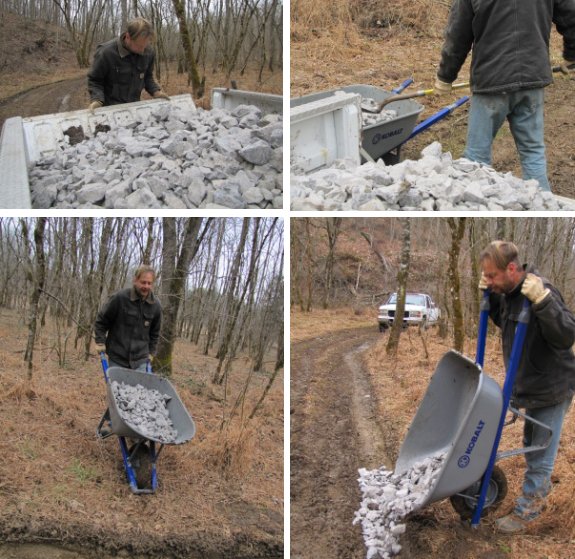
Kobalt wheelbarrow load limit

The new Kobalt wheelbarrow has enough
volume to handle 6 cubic feet, but when it comes to heavy gravel on
muddy terrain my new limit is somewhere between 4 and 5 depending on
how much elbow grease I can muster.
Want more in-depth information? Browse through our books.
Or explore more posts by date or by subject.
About us: Anna Hess and Mark Hamilton spent over a decade living self-sufficiently in the mountains of Virginia before moving north to start over from scratch in the foothills of Ohio. They've experimented with permaculture, no-till gardening, trailersteading, home-based microbusinesses and much more, writing about their adventures in both blogs and books.
Want to be notified when new comments are posted on this page? Click on the RSS button after you add a comment to subscribe to the comment feed, or simply check the box beside "email replies to me" while writing your comment.

Couldn't you just back up the truck until you get ot a spot that needs filling and shovel the gravel in from the truckbed? By backing up you will only drive over already filled-in holes so you don't get stuck...
Not to discourage you or anything, but you'll need a heck of a lot of truckloads to get a stable roadbed. The gravel ballast bed under a railroad is usually at least six inches thick... The stones need to interlock to create a stable bed with enough drainage.
We do the back-the-truck up method most of the time, but the ground was just too soupy to risk going off the road to turn around this time. Mark actually decided this way was a bit easier, though --- he didn't have to keep starting the truck and backing it up, and throwing the gravel instead of just lifting it.
We've been going at the driveway a bit at a time like this for the last five years, and it's slowly making a difference. The trick is that we don't try to gravel the whole driveway. We just pick trouble spots where we've dug ruts and fill the ruts with gravel. That gives us a lot more bang for our buck. We can already tell that the driveway's in about twice as good shape as it was this time last year, so we're definitely getting there.